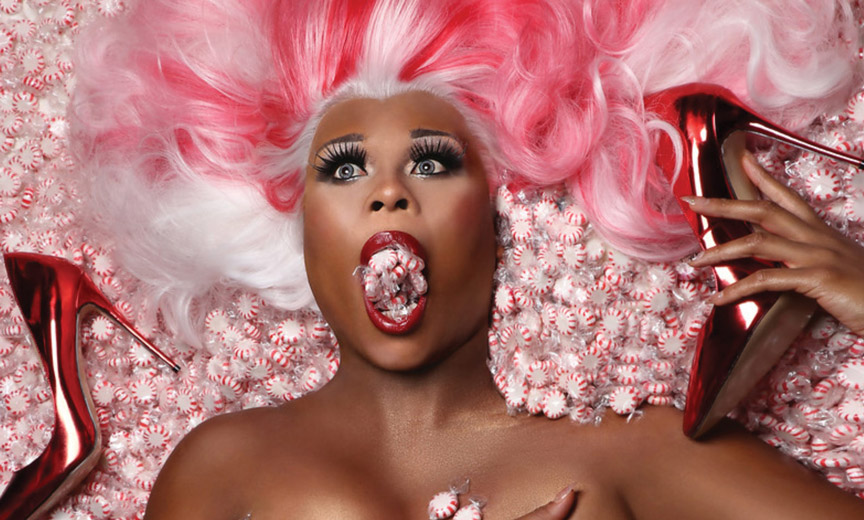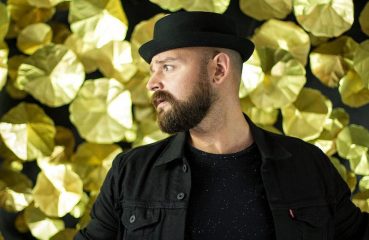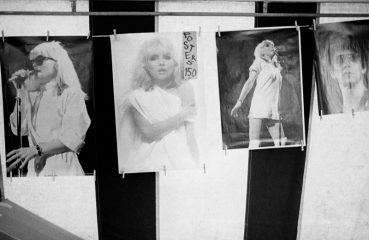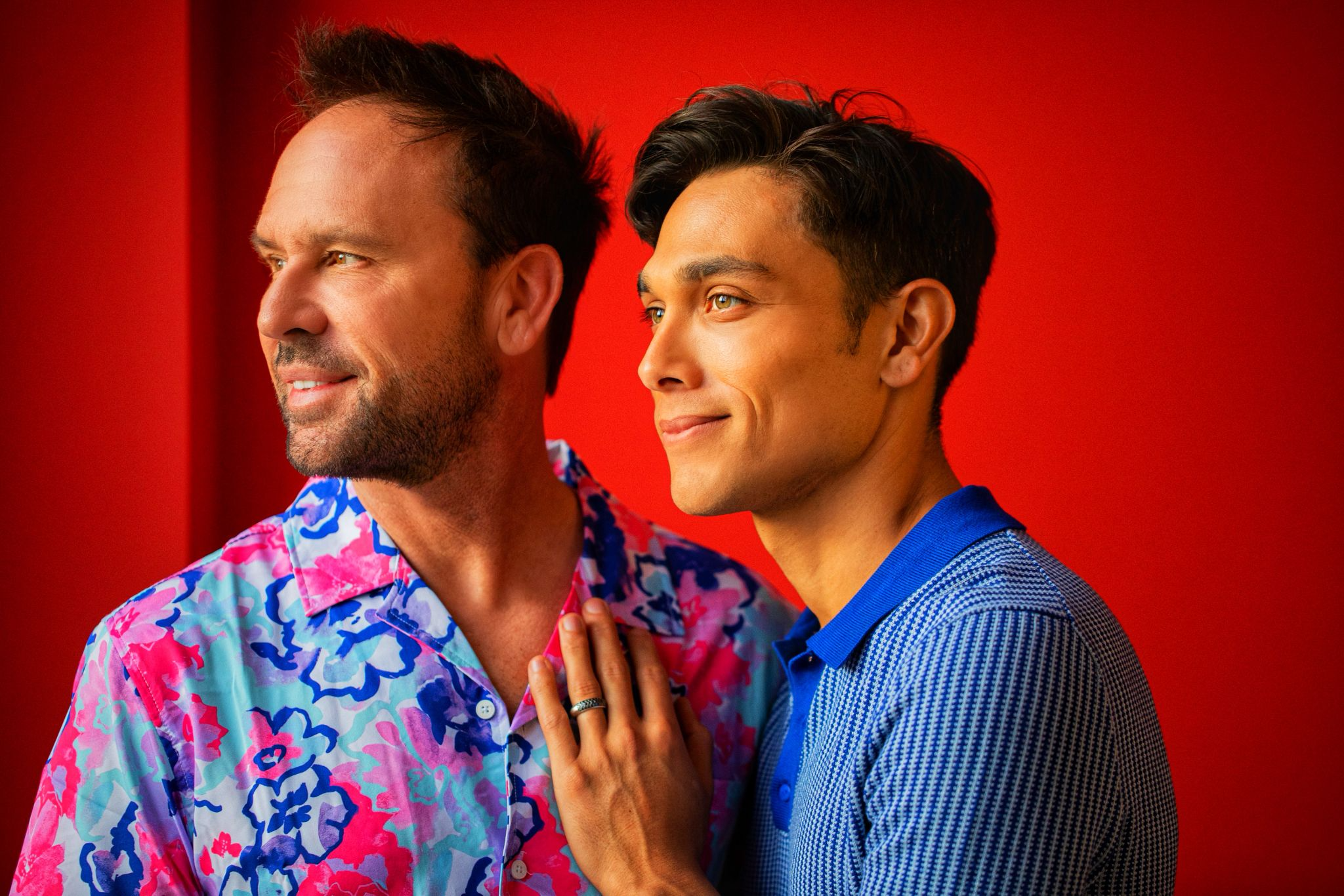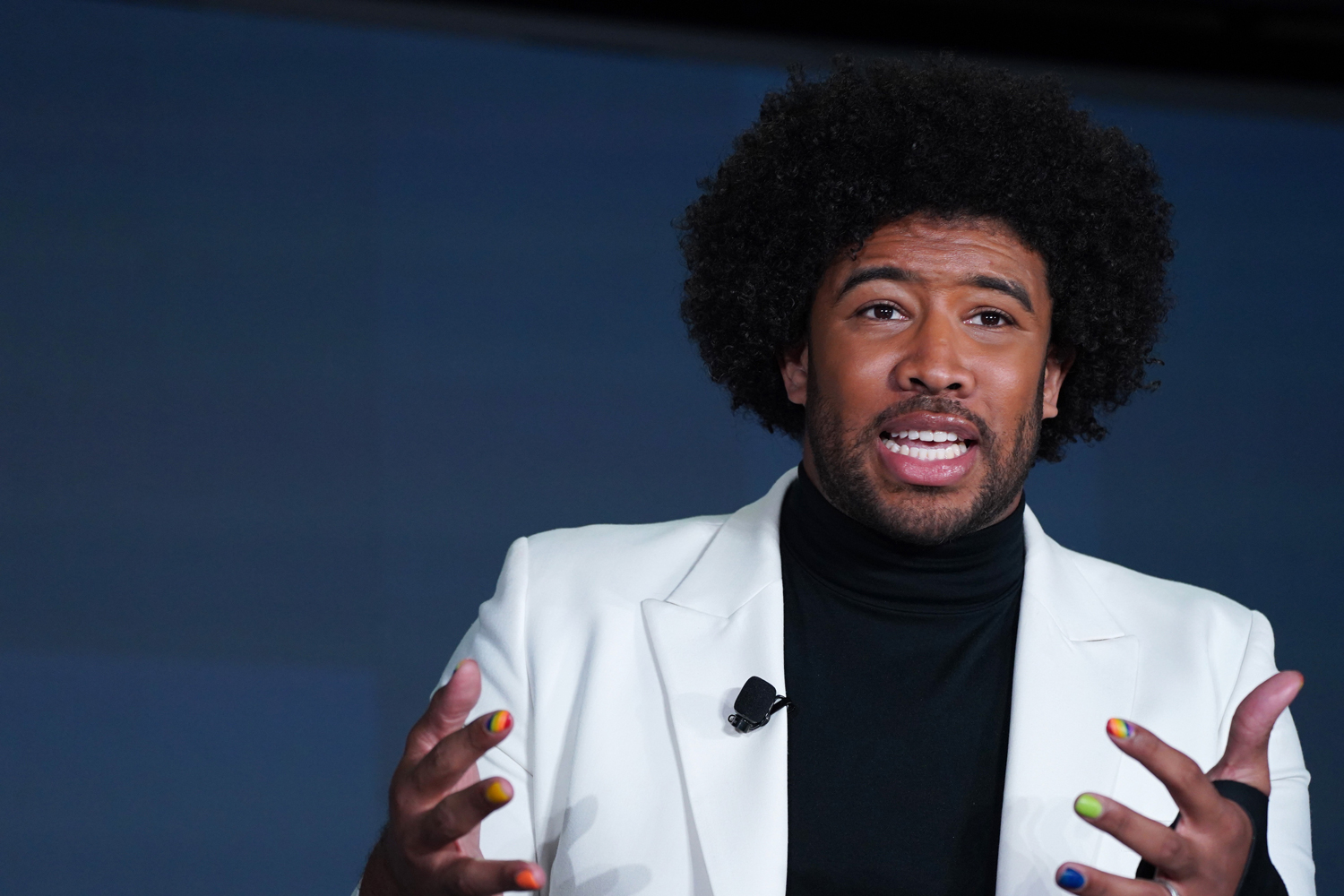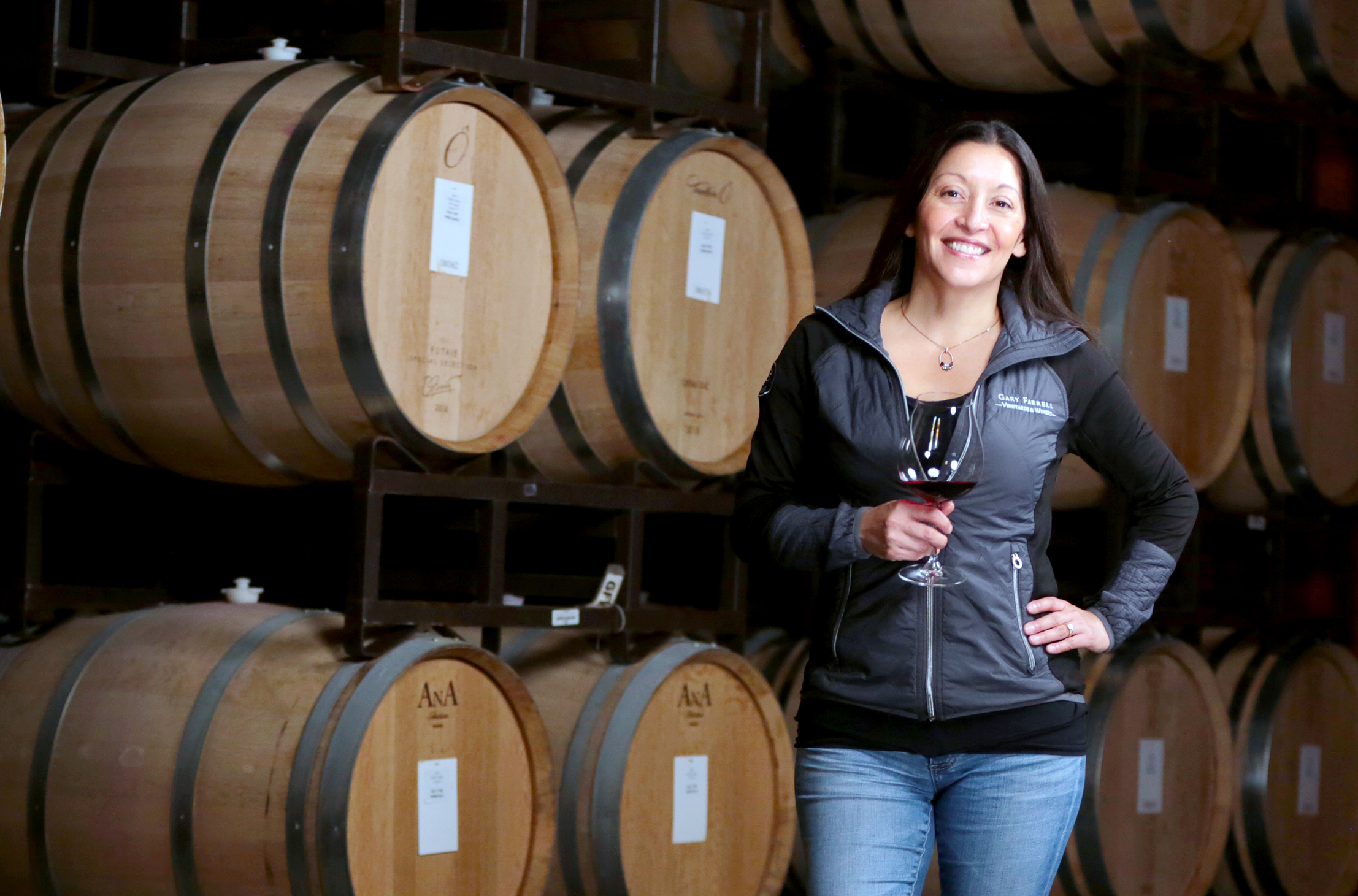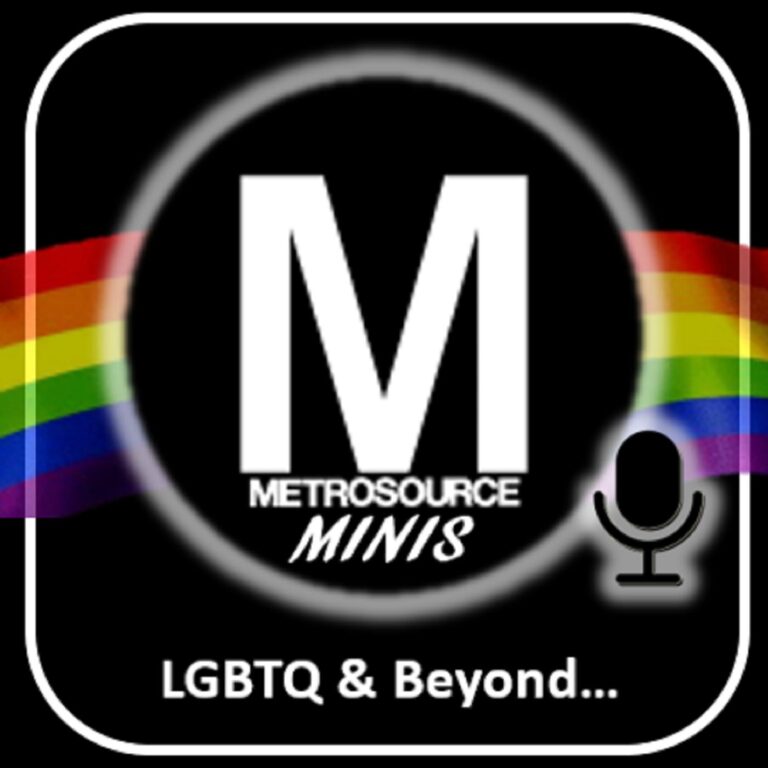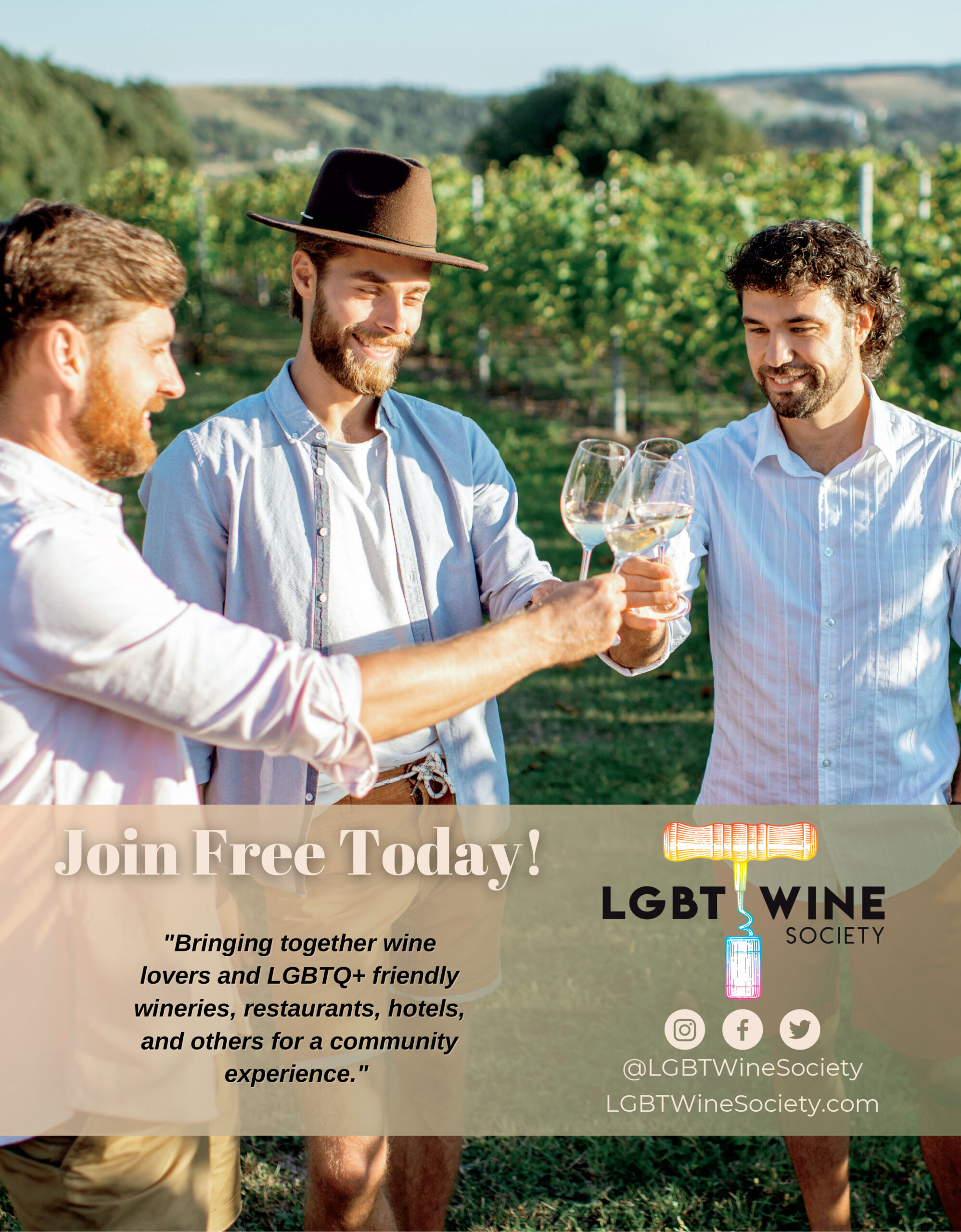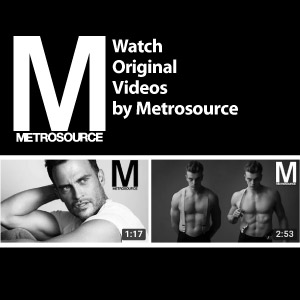It’s been quite a journey for Peppermint — from her assigned-as-male birth in Hershey, Pennsylvania and her upbringing in Wilmington, Delaware to the Broadway stage as a lead in the Go-Go’s musical Head Over Heels. She doesn’t use (or share) her birth name, she says, because that identity is behind her. But she did plenty of opening up about much more that’s never been documented before.
We caught up with the Head Over Heels star recently at DragCon, where she was our reigning cover girl:
METROSOURCE: When did you first recognize that you were not like the other kids on the block?
PEPPERMINT: I think I was fairly young, probably like seven or eight, maybe even younger; I think maybe second grade. But as far back as I can remember, I’ve always been the same exact being with the same thoughts and feelings — for the most part. At least I had the same personality, so that’s never really changed. It’s really just been about, over the years, finding out how much of that can I express. I learned at a very early age that a lot of the things that I wanted to express were no-no’s, things I couldn’t do without being corrected. There were always people telling you that what you’re doing doesn’t match up with what they think you should be doing. So I would not do those things. I don’t have a specific incident, but anytime I was a little swishy, somebody would say, “Oh, you’re acting like a girl,” or “What are you?” You know those words. Anytime you hear them, you know people are policing your behavior.
Did you push back? Or did you try to fit in and assimilate?
As a young kid, I didn’t want to be scolded by authority figures and I didn’t want to be made fun of or bullied by anyone in my family or adults or other students. So I would do whatever I could to not be bullied. At the same time, I never went to extremes to become the shining example of what they wanted. I just tried not to stick out. There’s a difference, I think. If you can entertain, it helps to distract people from you being different. If you can be different and stand out in a good way, that’s a way that you can get accolades.
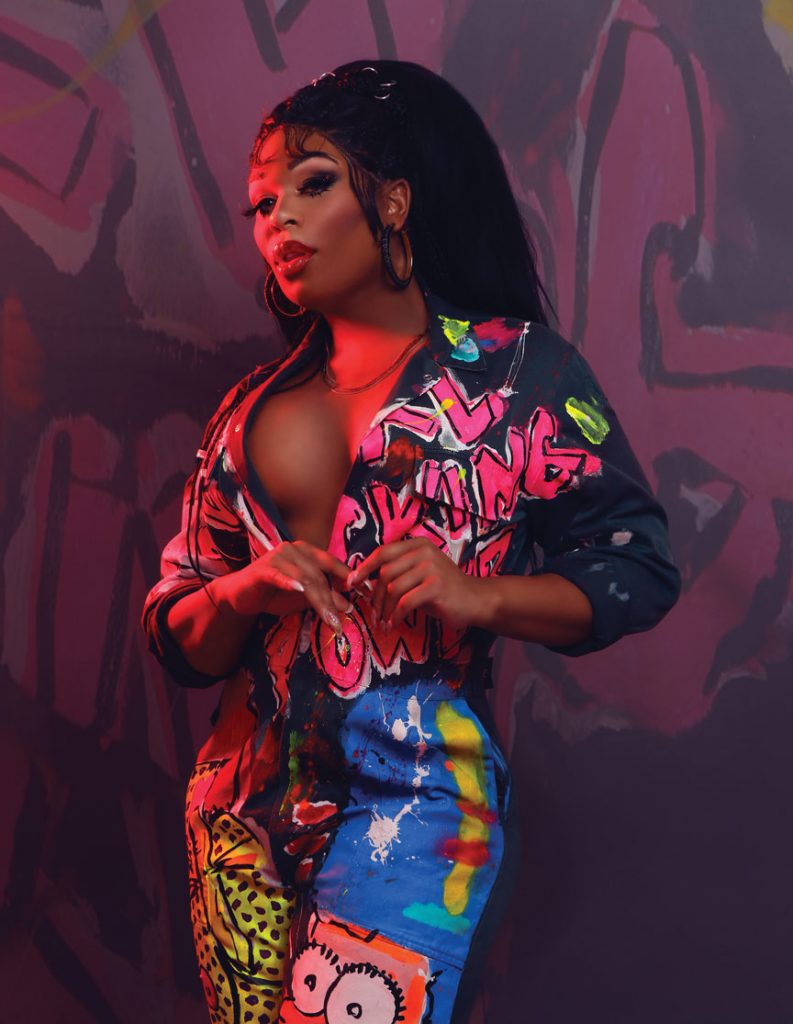
Photo courtesy of James Michael Avance
How old were you when that thought hit you?
There was a moment in time where I was swishing around the living room, putting towels on my head and flipping it around and singing -— maybe badly — and reciting lines from TV shows and movies that I’d seen. To me, there was no difference between being myself and being a performer or being a woman or young girl in my mind. …So from a very early age I was a performer, a female performer at heart. … My family recognized very early that I had an affinity for performing, because I’d do it in the living room for anybody who would come over. That’s really where it started. But then it was my family that suggested getting me into music and the arts and plays in school and things like that.
Which took you into musicals and plays and the arts…
It wasn’t until I was in high school that I started thinking about my chosen path, which was initially to become a make-up artist, ‘cause I was like: that’s something very retail, which seemed very doable. For college, I went to American Musical and Dramatic Academy here in New York. I graduated in ‘99. But a lot of my motivation was really just to be with other queer folks and live in the city.
Was there a moment back then when you said to yourself, “I see my future: I could do this!”
No. I mean, I really liked all that stuff. I loved it. You know, it brought me joy to perform and for the longest time, I found an equal amount of joy in all the arts. Singing, dancing, acting; together or separately. One of my favorite things to do was to learn Janet Jackson choreography and redo it over and over again exactly. But I never thought that I could necessarily have a career as myself. At least that was my thinking as an adolescent, pre-teen, pre-trans, pre-medical transition person. There just didn’t seem to be many examples of people like me. So I didn’t realistically see it as a vision, certainly not like I could be on Broadway.
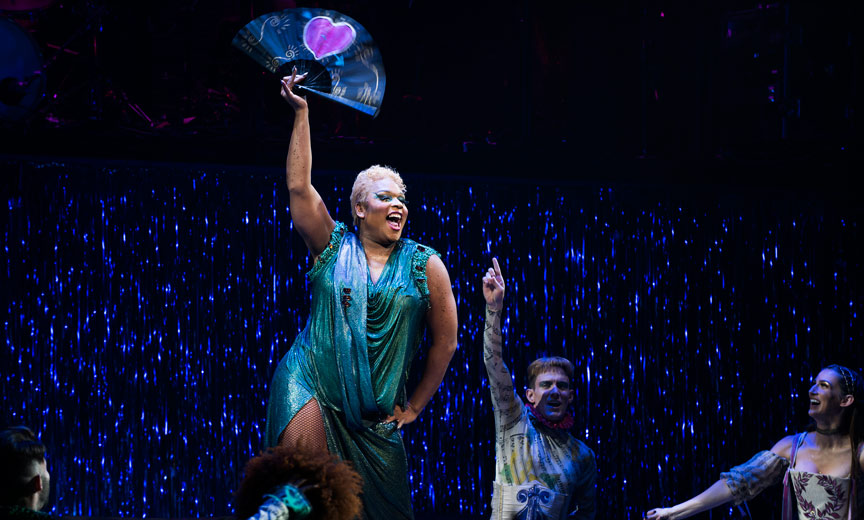
Peppermint on stage by Jenny Anderson
How did moving to NYC help you explore gender identity?
I got into drag professionally while I was in school. I was working at The Tunnel nightclub and getting paid $50 a week to do the ropes at the front door. Eventually they let me in. Then I did the door inside ‘til I got on the stage. I finally got to use what I was learning during the day in acting school — and then that’s when it all kind of came together. So for a while I was on a [path] where you learn and then go out and audition. And they encourage that. … But I went on several auditions, and they were not for roles that I wanted.
You thought you couldn’t audition for the parts that you wanted? Or they wouldn’t see you for those roles?
They wouldn’t see me for those roles, because they were, you know, the female lead. And to them, that’s not who I was. So I didn’t — and I didn’t think I could. It would have been putting myself through more humiliation and rejection than I needed to go through, especially since I knew I was gonna face rejection. As an actor, you expect a certain amount of that. So I didn’t go out for the roles that I wanted. Instead I went out for the roles that people wanted me to go out for, which were like the male lead or the male backup dancer or whatever. And that’s not who I was, and it was not a comfortable space for me at all. All of this long before I really had a chance to come into my identity as a trans woman. So it was still kind of figuring itself out, and I couldn’t walk through the door with a lot of confidence as you should in an audition. I didn’t have that self-confidence until much later. But I quickly realized auditioning was not for me, at least not at that time and place. Instead, I leaned on drag, where I was getting applause, I was getting paid, and I was even beginning to travel and make friends and find community. Opportunities seemed to open up for me down that path, so that’s the one I took.
Can you recall the first time you put on a dress and didn’t think of it as drag? Was it terrifying? Was it empowering?
Ha! Well, I don’t really have that kind of Hallmark Special moment where you’re in turmoil, and then — ah! — the light comes on and everything changes. For me it wasn’t quite so black and white. For some people it is. The difference for me was, the first time I ever crossdressed was when my grandmother dressed me up for Halloween as Boy George. I don’t know if that’s really crossdressing. So I dabbled with trying on women’s clothing in different ways. But it wasn’t necessarily me consciously trying to say, “This is who I am” and experiment with it. I just wanted to do something that was fun; that felt good. I gravitated towards it. So whenever there was an opportunity for everyone to put on costumes or dress outrageous in something over the top; well, other people would dress like a devil or Jason or Freddy Krueger, and I would dress like some girl. So in the context of what was going on, it wasn’t like we’re figuring out our gender identities. It was like, we’re just trying on costumes.
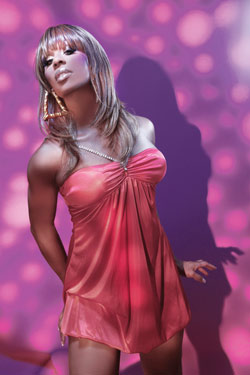
Moon goddess photo credit Karl Giant
But clearly that was just the beginning.
After that, it continued to resonate. As a theater kid, you have a lot of opportunity to try on costumes. So I did as a teenager and adolescent. The first time I really tried on a dress and walked around outside in public was when I was in drag, it was Halloween. I think I did drag for Halloween every — once I did it the first time I never turned back. So that was at least from the age of fourteen on, every year. And it would always be those limited moments. And then those limited moments would become more frequent until there was no space in between. So I had a chance to really get my feet wet. And it didn’t feel like I was doing something daring. By the time I had come into my own as a transwoman and really sorted those feelings out, I’d already been doing drag for ten years. So I was very confident in a female form. That being said, there is and was a difference between who I was presenting during the day as my everyday person, a transwoman, and the drag version of me.
I think people are curious about what those differences are. Some people speak about their drag persona in the third person. It’s just an isolated character for some people; that’s valid. For me, since it started out as the only way I could really express who I was, it was … a more colorful version of my everyday personality. I was really protective of the realism of that persona. That was the only control I had over creating and crafting myself as a woman — the drag version. … Only later on did I start to see a separation.
Between your female personas on and off stage?
It was awkward for me. … It wasn’t suitable for me to go out to the laundromat or to the store dressed like I do at night because it’s stage wear. So I had to figure out who this person was … what I would wear, how I was gonna present myself, how would my hair be. And it was terrifying leaving the house for the first time just wearing like a tank top and some shorts. For the first time I didn’t have the protection of a costume.
That makes sense. Has it ever threatened your personal safety?
I talked about this once on Rupaul’s Drag Race. I was in high school, and long story short, I got beat up by the basketball team because there was a rumor I had a crush on one of the players … led by the guy who thought I had a crush on him. Luckily, I wasn’t hurt. I mean, there might have been a bruise or a little soreness, but no broken bones, no broken skin. So yeah. It was sad, but right afterwards, I kind of got up and dusted myself off. Of course I was shaken, and had probably every feeling about it. But I walked to the office to look for an authority figure. And while I was in there talking, telling them what happened, you know how a lot of times school offices are pretty much just glass windows? I turned around, and I saw all of my friends, and I felt like the whole school was there looking, and sending vibes of love. We went to court, and my Mom was a huge champion. I had to stay in school while they went to court. But finally he got expelled, banned permanently from our school and all our sporting events. I saw him sneak in a month later in disguise basically, while I was cheering on the basketball cheerleading squad for his team. So I felt like I had won.
Getting back to your transition: you head this creeping sensation that you and your birth gender were not aligned.
Oh, more than creeping. I had existed as this performer in drag mode for more than ten years. And in the beginning, I didn’t really think I needed Drag Race. I was doing very well on my own. For 10, 15 years I’d been performing in drag, traveling the world … until a few years ago, when I noticed that [the show] was growing and growing. And these girls were now traveling into the spaces that I had once been one of the only ones to go. So I knew it could be a career boost. After Season Six, I was like, “Okay, maybe I should pay attention to this.” I auditioned three times. And I did not get on the first two, obviously. I was nervous about my presentation and worrying if they going to be able to detect that I’m trans in this tape because I don’t ever remember there being a positive example of them choosing and supporting a transwoman.
So your transition had already begun medically?
I started my medical transition in 2012, so it was well in process by the time I got onto the show. I definitely had more things that I would have wanted to do or that I was still deciding on, but I don’t really know that anyone’s transition, medically or otherwise, is ever complete. Because we’re always evolving, and the landscape for what’s acceptable is changing so much. The more room we get as queer people, the more space we take up. I feel like I’ll never be finished until we’re all equal. It’s also worth noting that I saw Drag Race as a means to an end, because I didn’t have any other way to earn the type of money I wanted to support my transition.
Was coming out as trans on the show something you agonized over, or was it an impulse kind of thing?
It was really like a pot that had been simmering my whole life. And so when is it gonna boil over? It wasn’t a matter of if; it was a matter of when. And I knew that we were gonna talk about it. So I went on the show telling myself that I wasn’t going bust through the door screaming, but the minute somebody mentions it, I’m gonna tell them and talk about it. And if they ask, I’ll be like, “Yeah, and what?” People ask if there were private conversations with Ru or the producers. No, baby. There’s no private conversations about anything — for the contestants. She’s there for the show and shoots the show. But I can say my participation in the show was never discussed as being in jeopardy because of my transness, ever.
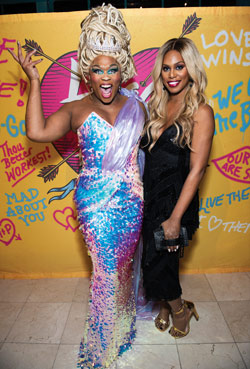
Peppermint with Laverne Cox by Jenny Anderson
Ru has said having someone trans on the show is problematic. You disagreed, because you think of drag as a character — not a gender identity.
It’s an amalgamation. There’s lots of really butch, manly men who do great drag. But anyone who says that they’re not in touch with something inside of them that is female or feminine would be lying to themselves. Ru said it best: “You’re born naked, and the rest is drag.” So we’re all already drag queens.
That brings us to the present: How did you hear about a Go-Go’s musical based on a completely unrelated old book?
It’s actually a very obscure old book called “Arcadia,” which is essentially a poem about utopia.
It takes a pretty creative mind to say, “Hey! This should be paired with Go-Go’s music!”
It really does! The project started years ago before I ever even knew about it. By the time I came aboard, they’d already gotten their backing and knew they were going to go to Broadway. Once they presented me with the entire body of work, I was able to see how timeless it was, how contemporary it is, how entertaining and funny it is — and how much many of the characters, including the one I play obviously, resonate.
So it’s all the hits? “Our Lips Are Sealed,” “Vacation,” “We Got the Beat” and the rest?
Plus “Heaven Is A Place On Earth,” and “Mad About You;” a lot of Belinda Carlisle songs. My song is “A Vision of Nowness,” which is a little more obscure.
Such a different world to be in than as a drag performer…
I definitely did feel some pressure in the beginning. But I’ve always known that the only way that it’s going to be successful is if I’m fully focused and connected to the material and just doing my thing. And I have to trust that’s why I was cast. So yes, I want the producers to feel satisfied. I want the audience to feel satisfied. And I wanted to feel satisfied myself. I think every performer goes through that. But I felt that kind of pressure even in a bar doing a drag show.
What’s it like to say you’re the first trans person to take the lead role in a Broadway musical?
Funny. It feels historic. It feels great. And it feels — well, I want to live up to it and do this moment justice. I think I can. I would like to. It feels like this show is perfect for me to continue on, and have a platform to speak out on behalf of our community. And it’s just fantastic. I think it’s the perfect place for me.
Check out our Resources Directory for LGBTQ-friendly businesses.
Discover this week’s best events in New York City!
Last modified: October 11, 2018

